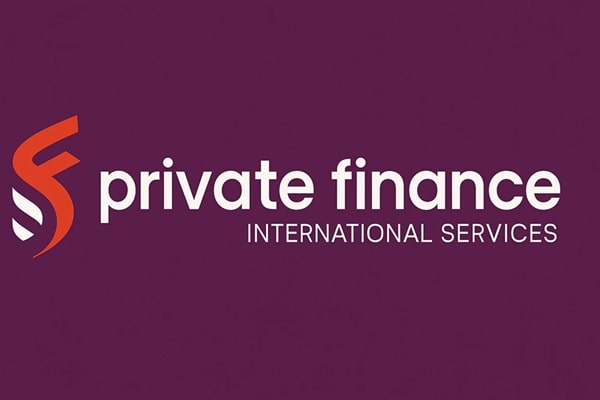Most people want to feel secure about their financial future. However, there’s a big difference between wanting security and planning for it. You may have the best intentions to save, invest, or think ahead, yet life’s demands—bills to pay, goals to juggle, and unexpected expenses—often push long-term planning to the backseat.
Without a clear strategy, even those with steady incomes can find themselves unprepared for critical moments or missed opportunities. A long-term financial plan goes beyond retirement. It’s a proactive tool for making smarter choices today that build a foundation for tomorrow. Whether you’re aiming to grow wealth, ease financial stress, or feel more in control, having a roadmap simplifies the process and keeps you focused on what matters.

This article offers practical, realistic tips to help you build a long-term financial plan that supports your goals and adapts to whatever life brings.
Set Clear and Specific Financial Goals
Defining your financial objectives is the cornerstone of a successful long-term financial plan. Are you saving for a home, planning a wedding, or hoping to retire early? Whatever they may be for you, clear goals provide purpose and direction. For many young Filipino professionals, an initial goal might be establishing a credit history, which often leads to online searches like “first-time credit card application Philippines.” While this might seem like a minor milestone, it lays the foundation for stronger financial habits down the line.
Once you’ve identified what’s important, the next phase involves turning them into actionable steps. Categorize your goals into short-, medium-, and long-term priorities. This keeps you realistic about what’s achievable now versus later. Assign estimated costs and deadlines to each goal to stay motivated and on track. Online tools like financial goal calculators can help you break down what you’ll need and how to pace your savings.
Create a Comprehensive Budget and Track Your Spending
A budget acts as a mirror. It reflects not just your spending but your priorities. If you’re working toward long-term financial goals, it’s essential to confront this reflection honestly. Start by reviewing the last few months of your spending to uncover patterns you might have overlooked. Those small, routine purchases can add up faster than expected, and recognizing these trends is crucial for making more intentional decisions.
With a clearer picture of your finances, you can then start adjusting your habits. That might mean setting spending limits in certain categories or automating transfers to your savings. A budgeting app can simplify the process, but even a well-organized spreadsheet can be effective. The ultimate goal is to gain clarity and ensure every financial decision feels deliberate, not reactive.
Build an Emergency Fund
Sometimes, it’s not the big financial decisions that derail a well-laid plan—it’s the unexpected, like a surprise dental bill or sudden job loss. That’s where an emergency fund comes in. Acting as your financial cushion, it helps you stay on track without resorting to borrowing, cutting back on essential spending, or dipping into your long-term savings.
Strive to set aside three to six months’ worth of essential expenses, such as rent or mortgage payments, groceries, utilities, and transportation. Break this down based on your average monthly spending to get a clear target amount. If saving this much seems overwhelming, focus on small monthly goals and automate contributions where possible for consistency. Consider keeping your emergency fund in a separate, accessible account to avoid using it for non-emergencies while potentially earning interest to grow over time.
Invest for Growth, Not Just Security
A long-term financial plan shouldn’t rely on savings alone. While saving is essential for short-term needs and emergencies, it doesn’t offer the growth potential needed to build lasting wealth. Investing, on the other hand, puts your money to work, helping it grow over time to meet significant goals like starting a business, funding your children’s education, or buying property.
Begin by outlining your objectives and assessing how much time you have to achieve them. Long-term goals typically benefit from higher-yield investments, such as stocks, mutual funds, or index funds, which can outpace inflation and generate substantial returns. If you’re new to investing, start small with options that match your comfort level and gradually expand as your confidence grows. The key is to stay consistent and ensure your investments align with both your timeline and risk tolerance.
Plan for Retirement and Insurance Needs
Though retirement may feel like a distant goal, thinking ahead gives you the freedom to shape a future on your own terms. To plan mindfully, visualize the lifestyle you want and estimate the income required to sustain it. Make sure to factor in inflation and future costs, and explore potential sources of income, such as pensions, investment returns, or private retirement funds. If available, employer-sponsored retirement plans are worth maximizing; otherwise, private accounts and long-term investment options can serve as valuable alternatives.
Equally important is securing insurance. Life, health, and disability coverage protect you from risks that can derail even the most carefully built financial plan. Think of them not as extra expenses, but as safety nets during uncertain times. With suitable retirement and insurance protection in place, you can move forward with confidence, knowing that you’ve set the stage for a financially secure and resilient future.
Securing a strong financial future begins with thoughtful and strategic planning. With a clear roadmap, you can take control of your finances today and lay the foundation for long-term stability. Follow the strategies outlined here to help you get started. That said, but remember that flexibility is key. Regularly revisit your plan, reassess your priorities, and make adjustments as your circumstances change, ensuring it continues to support your goals over time.

